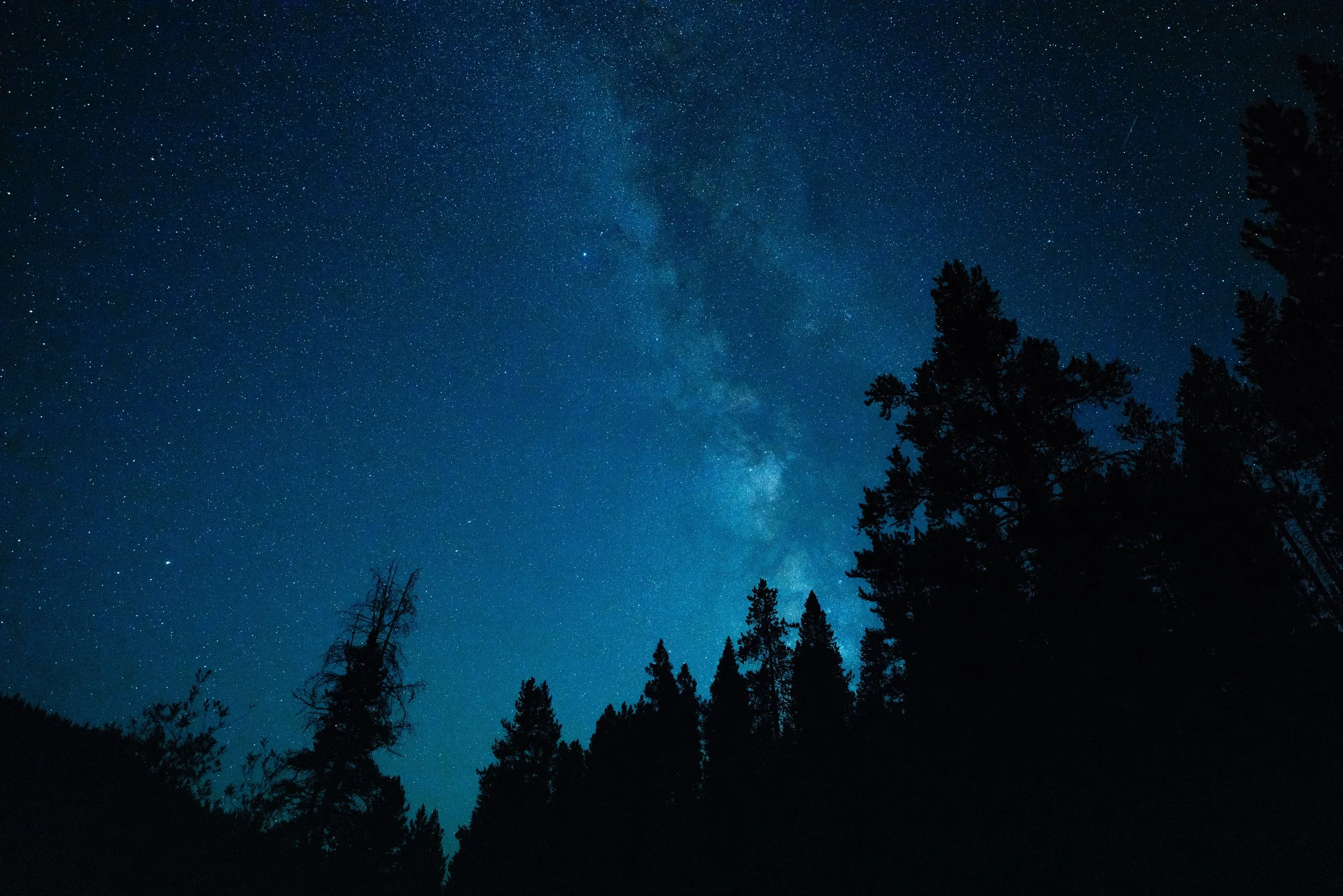Image credit: Luke Stackpoole, Unsplash
If you have been lucky enough to witness the northern lights, you know how stunningly beautiful they are as they dance and transform across the sky. There have been many theories on their cause throughout history – from Inuit legends to Nordic tales.
What are the northern lights?
Scientifically, the northern lights are caused by interactions in the atmosphere by solar particles and the earth's magnetic field; the particles strike the earth's upper atmosphere and are drawn to the poles, creating the streaming effect you see. They are known as aurora borealis in the northern hemisphere, and aurora australis, or southern lights, in the southern hemisphere. Oxygen-based compounds glow yellow or green, while nitrogen-based compounds glow red, blue, or purple.
You can occasionally see the northern lights on a clear Edmonton night; however, if you want to see them in all their splendour, leaving the city and getting away from light pollution is the best way to do so. But where do you go to see them? Parks Canada has 13 dedicated Dark-Sky Preserves, five of which are in Alberta. In fact, there are over 180 Dark-Sky sites that are recognized internationally that are committed to dark-sky preservation.
Dark Sky Sites
Dark-Sky sites are areas dedicated to reducing light pollution, conserving the night, and engaging in community outreach. They are often associated with or contained within a National or Provincial Park and have different designations based on community programming and their proximity to urban areas. You can often camp overnight or make a day trip to them for stargazing and northern light viewing, and many of them have observatories and run community programs. To be recognized as a Dark-Sky site, there is a rigorous application process and commitment to preservation and conservation.
Photo by Joshua Woroniecki on Unsplash
Preserving the Night in our own Backyard
Interestingly, the first site to be designated was the Beaver Hills Biosphere, which includes the area between and including Elk Island National Park, Cooking Lake, and Miquelon Lake Provincial Park. Lakeland Provincial Park was the latest to be designated, while Grasslands National Park and Wood Buffalo National Park are considered the darkest and the largest in Canada, respectively.
Dark-Sky sites aren't just for stargazing, they are a part of a conservation effort to minimize the effects of light pollution on wildlife and ecosystems. Many animals and plants use daylight length to initiate reproduction and migration, and light pollution causes changes to their normal rhythm. Countless bird species migrate by night, and light pollution causes them to alter their migration times or their route. Millions of migratory birds die every year because they are drawn off course and strike illuminated city buildings. Additionally, some predators utilize night and natural light sources for navigation and hunting, and many prey species use the cover of night to evade their predators. Light pollution also affects insect populations, which has cascading effects down entire food webs as many species rely on insects for food and pollination.
Reducing light pollution and protecting Dark-Sky sites are not only a great way to experience the night sky, but they are also vital to wildlife and ecosystem conservation. The Smith-Blackburn Homestead, one of EALT’s properties, is just next to Elk Island National Park and is another excellent place to view the night sky - in fact, we have four properties in the Beaver Hills Biosphere: Smith-Blackburn Homestead, Ministik, Golden Ranches, and Hicks. Land conservation and protecting natural areas plays a big role in keeping the night sky dark, so supporting conservation organizations is an important way you can help with this effort!
Guest blog by Jana Teefy
Thumbnail credit: Photo by Vincent Guth on Unsplash




